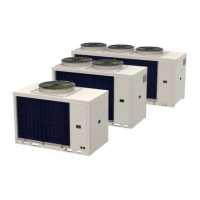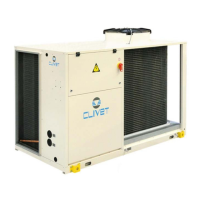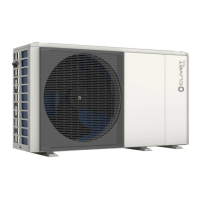
Do you have a question about the CLIVET WiSAN-YSE1 10.1 and is the answer not in the manual?
Ensuring safe operation through adherence to regulations and proper protective equipment.
Specifies the unit's designated purpose and adherence to technical specifications.
Guidelines for safe installation, including electrical checks and compliance with local regulations.
Immediate actions and consequences for unit breakdown or malfunction, emphasizing certified service.
Details on the unit's identification plate and necessary information for assistance requests.
Procedures for checking the unit upon delivery for damage or discrepancies.
Recommendations for proper storage conditions and safe handling of the unit.
Considering local regulations, customer needs, and unit weight for optimal positioning.
Ensuring adequate airflow and functional spaces for operation and maintenance.
Guidelines for unit positioning, airflow, and safety valve considerations.
Management of condensate water and installation of anti-vibration mounts for stability.
Details on available anti-vibration mount kits and their specifications for different configurations.
Hydraulic system parameters, water quality requirements, and system cleanliness for optimal operation.
Strategies for preventing freezing, managing water flow rates, and system water content.
Installation of filters, non-return valves, and various hydronic unit connection diagrams.
Procedures for victaulic fittings, operation sequence, and unit configurations.
Specifications for power supply, network types, voltage, and protection requirements.
Guidelines for controller wiring, signal/data lines, and remote control options.
Details on connecting probes, heaters, alarms, pumps, and other specific components.
Electrical connections and configuration for the domestic hot water function.
Verifying proper installation, electrical isolation, and safety measures before initial start-up.
Step-by-step sequence for unit start-up, covering power supply and operational checks.
Checking refrigeration and electric circuits, options, and regulatory compliance before operation.
Description of the control panel interface, buttons, and basic operations like lock/unlock and on/off.
Explanation of display icons and how to set date, time, mode, and temperature.
Details on silent mode, domestic hot water control, querying variables, and timer functions.
Understanding unit statuses, error codes, and interpreting alarm indicators for troubleshooting.
Ensuring safety in work areas, checking for refrigerant, and implementing electrical and component safety.
Safe practices for leak detection, removal, evacuation, charging, dismantling, and recovery of refrigerants.
Guidelines for labelling, recovery, transport, marking, and safe storage of equipment containing refrigerants.
Guidelines for authorized maintenance, safety checks, unit booklet creation, and standby mode.
Recommended inspection frequencies and a comprehensive checklist for periodic maintenance tasks.
Detailed maintenance steps for key components like exchangers, filters, pumps, fans, and leak detectors.
Procedures for safely disconnecting the unit and recovering refrigerant and hydraulic fluids.
Guidelines for proper disposal of electrical and electronic equipment according to WEEE regulations.
Identification of common risks during installation, handling, and general operation of the unit.
Awareness of electrical hazards, risks from moving parts, and potential dangers related to refrigerant.
Master/slave unit logic, communication, and addressing for modular systems.
Details on input/output manifolds, pump systems, and unit addressing methods.
Procedures for starting up modular systems, remote control, and understanding alarm conditions.
Details on Modbus protocol, transmission speed, data bits, and parity for system communication.
Register definitions and descriptions for controlling and monitoring unit parameters via Modbus.











